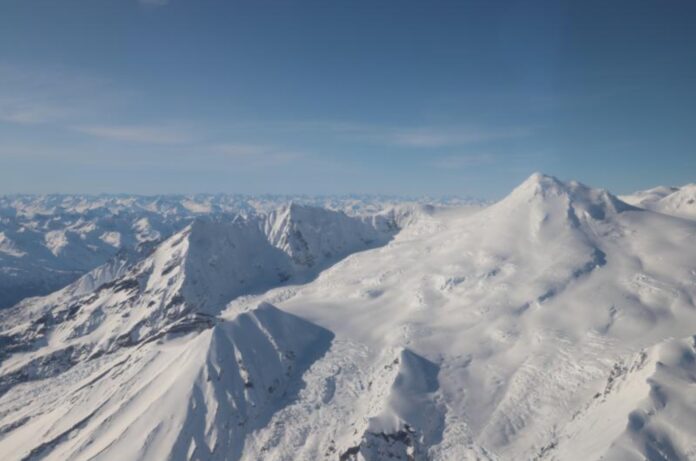
Mount Spurr, the 11,070-foot volcano that towers west of Anchorage across Cook Inlet, is showing signs of settling down, at least for now, after a winter of heightened unrest that sparked eruption watches from the Alaska Volcano Observatory.
In March, scientists with the AVO issued a notable alert, warning that “the likelihood of Mount Spurr eruption in the next few weeks or months has increased.” They cited significantly elevated volcanic gas emissions, newly reactivated fumaroles at the volcano’s Crater Peak vent, and persistent earthquakes and ground deformation. The data suggested that new magma had intruded into the crust beneath the volcano, raising concerns that Mount Spurr might be preparing for an explosive eruption similar to those of 1953 and 1992.
But three months later, those dire warnings have not materialized. While Mount Spurr remains restless, the volcano has not escalated to a more threatening phase. “Although low-level unrest continues, no changes have been observed in the monitoring data to indicate that the volcano is moving closer to an eruption,” the AVO reported this week.
Volcanologists are continuing to track low-level seismic activity and occasional steam plumes seen on clear days through webcam feeds. Yet the volcano’s behavior has not intensified in a way that would suggest magma is rising toward the surface, a necessary step before an eruption.
“Based on previous eruptions,” the AVO explained, “changes from current activity in the earthquakes, ground deformation, summit lake conditions, and fumarolic activity would be expected if magma began to move closer to the surface.”
That means the eruption risk, while not entirely dismissed, appears significantly lower than it was earlier this year. The warning signs scientists are watching for, such as more frequent and stronger earthquakes, increased gas output, and rapid surface changes, have not materialized.
Things can change in Alaska’s volatile volcanic landscape. In both 1953 and 1992, Mount Spurr produced short-lived but powerful eruptions that launched ash clouds into the skies and dropped a thin layer of ash on Southcentral communities, including Anchorage.
While the volcano is currently holding steady, AVO continues to monitor Mount Spurr, which remains relatively quiet, but under watch.
It looks my sacrifice to Mt. Spurr worked…
You win the internet today. – sd
Thank you!
“Experts” at it again.
I wonder what their true motives were in promoting fear in the public.
Did this promote sales in air filters, respirators and eye protection?
Hmmm.
I was thinking the fear campaign began when federal DOGE cuts were being discussed. I do not know for sure if AVO was one of the agencies suggested for budget cuts or closure.
I can’t help wondering if the timing of the elevated alert was linked to renewal of their funding. It wouldn’t be at all out of character for a government agency.
Scott Stewart, I do believe you are more accurate than most of us would like to believe.
You mean we should follow the $cience?
KTUU and the Anchorage School District were apoplectic over the possibility of a Spurr eruption. The television station had breathless coverage for weeks – typical of some media these days. Fear sells. I could just feel that they wanted to include a link to climate change, if that was possible. One can understand that such emphasis made better sense than video of the expanding and worsening vagrant problem under the current Mayor and Assembly.
100% Scott.
100% “Ditto” to Scott Stewart and Doug glenn…
Interestingly, I was thinking about Spurr asploding whilst driving today, and not seeing the slightest wisp.
Chicken Little, it is the dimlibby way!